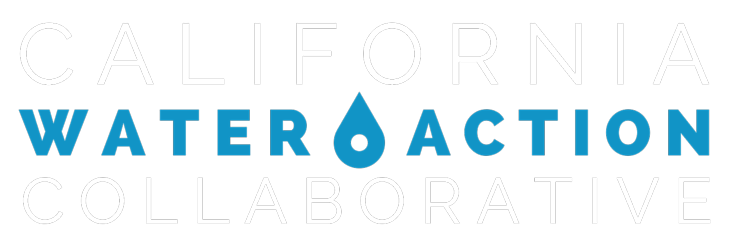The purpose of the pilot is to help participating companies understand the local water context and engage with peer companies, public sector water agencies, and other stakeholders in the basin to align measurement systems, set meaningful targets, and prioritize actions and investments that address the key water challenges in the region.
Corporate Water Stewardship and the California Water Action Plan
The CEO Water Mandate – a corporate water stewardship initiative administered jointly by the UN Global Compact and the Pacific Institute – facilitated a statewide collaboration with CWAC members and other partners to identify specific opportunities where the private sector can help accelerate progress toward the California Water Action Plan's vision.
Dairy Irrigation Innovation
Expanding Groundwater Recharge
Incentivizing Coastal Farmers
Tahoe Headwater Restoration
The National Forest Foundation is working with the U.S. Forest Service and partners Coca-Cola and Olam to restore the Tahoe National Forest Headwaters to optimum health by thinning vegetation, restoring meadows and river channels, eradicating invasive species, improving water flows, increasing sustainable recreation, and enhancing volunteer opportunities for youth.
American River Headwaters
The Nature Conservancy and partners are implementing a landscape-scale forest restoration and research project. The project aims to increase the pace and scale of ecologically-based forest and watershed management to reduce the risk of high-severity wildfire, protect water supply, and increase watershed resilience.
Arundo Donax Eradication in the Los Angeles River Basin
Arundo (commonly referred to as giant reed) has significant negative impacts on water availability, water quality (i.e. sediment loads, temperature, pathogens, nutrient loading, flow modification), habitat, fires, and infrastructure. The objective of the project is the eradication of Arundo donax within the Upper Los Angeles River (ULAR) Watershed.
California Wildfire Restoration: Camp and Carr Fires
Wildfire threatens watersheds as it erodes the landscape, allowing more runoff and debris into water supplies. In a post-fire landscape, vegetation is crucial. This project will reforest private lands that these fires impacted and that will not naturally regenerate, complementing improved forest management activities.
Colorado River Indian Tribes DCP System Conservation
Cosumnes Watershed: from the Foothills to the Floodplains
The Cosumnes watershed is one of the last major undamned river systems in the east side of the Central Valley. This project is an opportunity to offer multiple benefits including replenishment in a critical watershed, multiple paths to support Bay area drinking water supplies, habitat protection efforts, and near-term benefits to the Sacramento-San Joaquin Delta.
Feather River Watershed Meadows Portfolio
Groundwater Exchange
Merced Avenue Greenway
The Greenway project aims to change Merced Avenue into a community resource, and help maximize the City of South El Monte’s opportunities to clean and capture stormwater, reduce greenhouse gas emissions and urban heat island effect, and provide safe active transit connections to local parks and river connections.
Onsite Water Reuse in Silicon Valley
Regenerative Agriculture and Water
Sacramento Valley Water Resilience Initiative
To recover and sustain water resources, this project provides both an assessment of existing water use and management, and a system for targeting and prioritizing opportunities for field-scale conservation actions that improve quality and quantity for groundwater dependent ecosystems, and rural and otherwise underserved communities.
San Gabriel Watershed Restoration
Southern California Sustainable Landscapes Initiative
Yuba II Forest Resilience Project
Wildfires are now the biggest natural disaster facing the Western US. 65% of California’s water supply originates in watersheds at high risk of wildfire. Restoring healthy function to forests includes interventions such as thinning, prescribed fire, meadow restoration, invasive plant removal, native plant regeneration, and road decommissioning. By implementing a Conservation Finance model, Blue Forest & the World Resources Institute seek to scale forest restoration across the West, starting in California.
